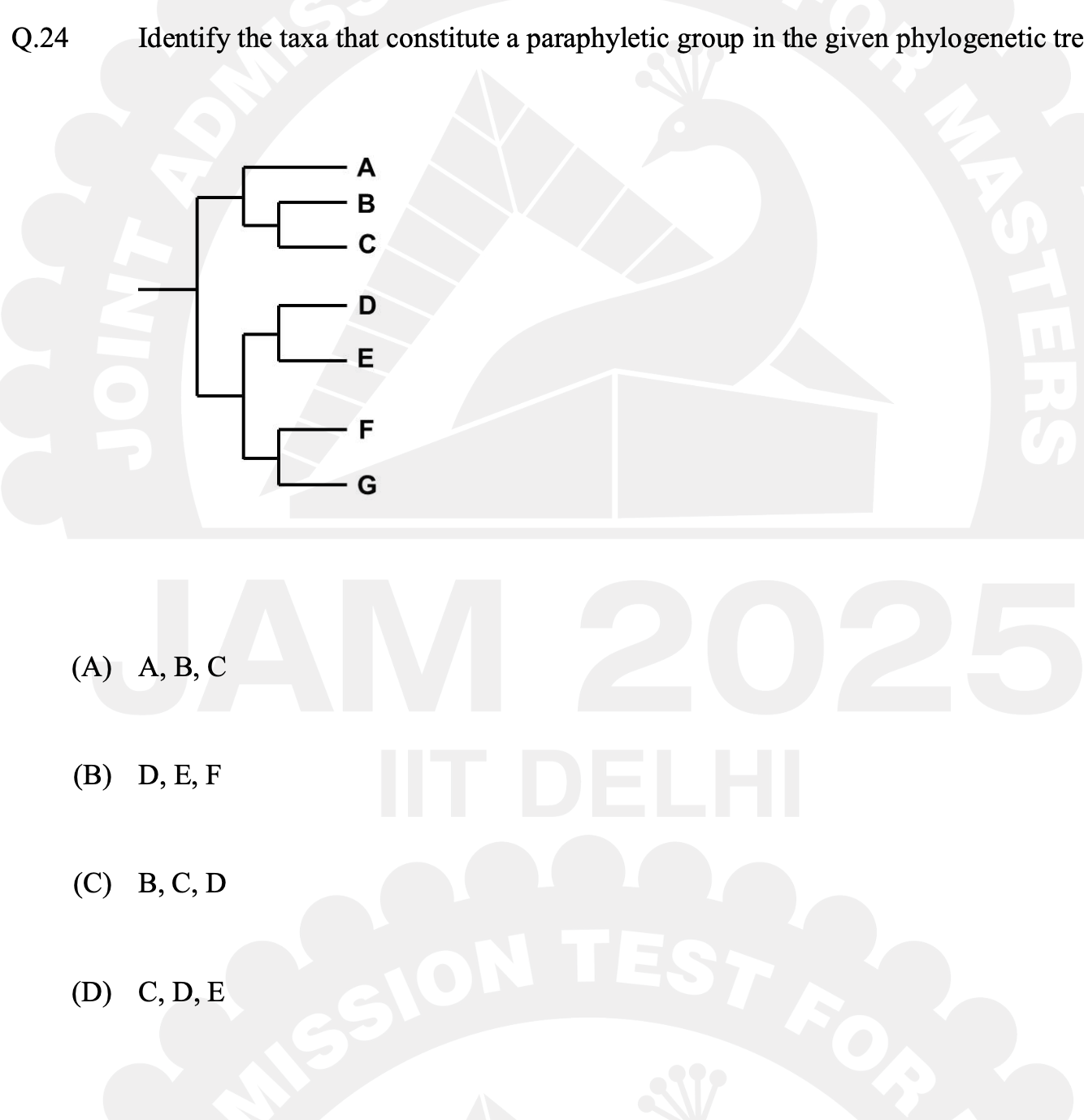Identify the taxa that constitute a paraphyletic group in the given phylogenetic tree.

Understand the Problem
The question asks to identify the taxa that form a paraphyletic group within the presented phylogenetic tree. A paraphyletic group includes a common ancestor and some, but not all, of its descendants. We need to analyze the tree and the given options (A, B, C, D) to determine which set of taxa fits this definition.
Answer
The paraphyletic group is (D) C, D, E.
The correct answer is (D) C, D, E.
Answer for screen readers
The correct answer is (D) C, D, E.
More Information
A paraphyletic group includes a common ancestor and some, but not all, of its descendants. From the image, taxa C, D, and E share a common ancestor, but the group excludes some descendants, making it paraphyletic.
Tips
A common mistake is confusing paraphyletic groups with monophyletic groups, which include all descendants of a common ancestor.
Sources
- Paraphyly - Wikipedia - en.wikipedia.org
- Paraphyletic Group vs. Polyphyletic Group | Overview & Examples - study.com
- 2.4 Phylogenetic Trees and Classification - Digital Atlas of Ancient Life - digitalatlasofancientlife.org
AI-generated content may contain errors. Please verify critical information